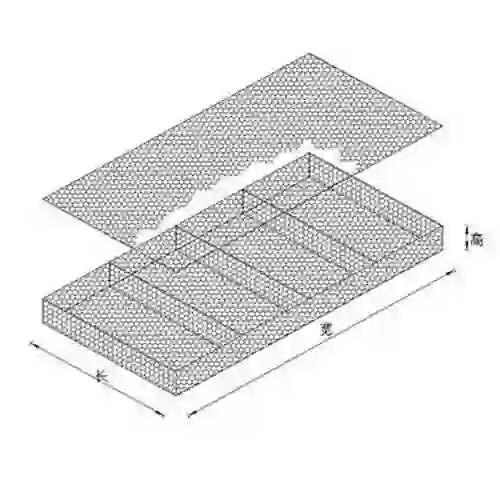-
 Phone:
Phone: -
 Email:
Email:

tie wire steel
Understanding Tie Wire Steel A Comprehensive Overview
Tie wire, also known as binding wire, is an essential component in the construction and manufacturing industries. Composed primarily of low carbon steel, tie wire is predominantly used for binding purposes — providing stability and facilitating the construction process. In this article, we will delve into the characteristics, applications, and manufacturing processes associated with tie wire steel.
Composition and Properties
Tie wire is primarily made of low carbon steel, which contains a carbon content of 0.05% to 0.25%. This allows for improved ductility, making the wire both strong and flexible. The choice of low carbon steel ensures that the wire can withstand significant stress while remaining malleable enough to be twisted and shaped without breaking.
Tie wire typically comes in different gauges (thicknesses), enabling it to meet various construction needs. The most common gauges range from 12 to 16, with thicker wires being used for heavy-duty applications and thinner wires for lighter binding tasks. The tensile strength of tie wire is a critical factor, and it is often designed to withstand forces ranging from 250 to 500 MPa, depending on the specific requirements of its application.
Manufacturing Process
The manufacturing of tie wire involves several steps. Initially, low carbon steel rods are drawn into wire through a process called wire drawing. This involves pulling the steel through a series of dies, gradually reducing its diameter while increasing its length. The wire is then annealed, a heat treatment process that improves its ductility and reduces brittleness.
Post annealing, the wire may undergo pickling, where it is treated with acid to remove any surface impurities, rust, or oxidation. This step is crucial as it enhances the wire's ability to bond with cement or other materials in construction environments. Finally, the wire is coiled into spools or cut into predetermined lengths for distribution and usage.
Applications
tie wire steel

The versatility of tie wire makes it applicable in various sectors, especially in construction. Here are some of the common uses of tie wire steel
1. Reinforcement in Concrete Tie wire is extensively used for binding rebar (reinforcing bars) in concrete structures. It helps hold the rebar in place before and during the pouring of concrete, ensuring structural integrity and enhancing durability.
2. Brick and Tile Installation In masonry work, tie wire is used to secure bricks and tiles, ensuring that they remain in position as the mortar sets. This is essential for creating strong walls and facades.
3. Fencing and Agriculture Tie wire is employed to secure fencing materials, providing support for livestock enclosures and garden fencing. Additionally, it can be used for trellising plants in agricultural settings, helping to support their growth.
4. Industrial Applications Numerous industries utilize tie wire in packaging and binding various products. It can be used to bundle materials, ensuring they remain organized and secure during transport or storage.
5. Craft and DIY Projects Tie wire has become a favorite among crafters and DIY enthusiasts for projects requiring bending, twisting, or binding materials. Its malleability and strength make it ideal for various arts and crafts.
Conclusion
Tie wire steel plays a pivotal role in multiple industries, particularly in construction, where it serves as an essential binding material. Its unique properties, including high ductility, strength, and versatility, enable it to meet diverse needs across different applications. As construction techniques continue to evolve, the demand for reliable and efficient materials like tie wire steel is likely to remain high. Understanding the characteristics, manufacturing processes, and applications of tie wire can help professionals in the industry make informed decisions and optimize their construction projects. Whether you are involved in large-scale construction or small DIY projects, tie wire is undoubtedly an important material to consider.
-
Wire Mesh for Every Need: A Practical SolutionNewsJul.25,2025
-
Steel Fences: Durable, Secure, and Stylish OptionsNewsJul.25,2025
-
Roll Top Fencing: A Smart Solution for Safety and SecurityNewsJul.25,2025
-
Cattle Farm Fencing Solutions for Maximum SecurityNewsJul.25,2025
-
Affordable Iron Binding Wire SolutionsNewsJul.25,2025
-
Affordable Galvanized Wire SolutionsNewsJul.25,2025
-
Wire Hanger Recycling IdeasNewsJul.25,2025








